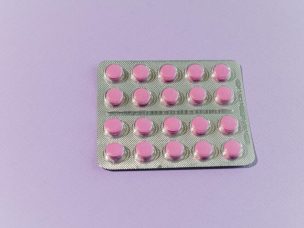Menopausal symptoms may not be directly linked to cardiometabolic risk, nor do they appear to be a reliable predictor of how risk factors may change as menopause approaches.
The menopausal phase brings about various symptoms, such as hot flashes and night sweats, aka vasomotor symptoms (VMS), as well as challenges with sleep, feelings of anxiety and depression, sexual issues, and urogenital symptoms.
Additionally, during the transition to menopause, there is an increase in the occurrence of risk factors associated with cardiometabolic diseases (CMDs). These factors encompass elevated blood pressure, total and abdominal fat mass, and blood sugar, blood lipid, and blood glucose levels. A study in the journal Maturitas assessed the connections between cardiometabolic risk factors and menopausal symptoms.
Study Design and Population
This was a 4-year research study involving a subsample of 298 women selected from a larger population sample of 1,393 women aged 47 to 55 years. The study aimed to examine the prevalence of vasomotor, psychological, somatic or pain, and urogenital menopausal symptoms and their associations with cardiometabolic risk factors.
Positive Association of Cholesterol Levels With Menopausal Symptoms
Higher total cholesterol, high-density lipoprotein cholesterol, low-density lipoprotein cholesterol (LDL-C), and total and abdominal fat mass were linked to vasomotor, and urogenital symptoms. In particular, VMS were more associated with increased LDL-C and total cholesterol levels. However, after correcting for confounders, the correlations between menopausal symptoms and cholesterol levels were reduced, indicating that variations in age, menopausal state, BMI, socioeconomic position, and lifestyle choices partly explain these correlations.
Relationship Between Menopausal Symptoms and Systolic Blood Pressure
Participants with more urogenital, psychological, or somatic complaints tended to have higher systolic blood pressure (SBP), ranging from 0.96 to 2.83 mm Hg. Those who reported more VMS tended to have lower SBP, with an estimated drop per reported symptom ranging from 0.91 to 1.71 mm Hg.
CMD Risk Is Enhanced by an Increase in Adipose Tissue
Many menopausal symptoms are linked to increased adipose tissue, which raises the risk of CMD, and the emergence of a proinflammatory adipokine profile, which may contribute to the development of VMS. The amount of adipose tissue may be a factor in the relationships between menopausal symptoms and CMD risk factors, since BMI has been documented to moderate the connections between VMS and blood lipids. Additionally, menopausal symptoms do not predict changes in CMD risk factors during the menopausal transition and are not related to blood sugar, lipids, blood pressure, or physical activity levels.
To further understand the independent impact of menopausal symptoms on CMD risk in women, more extensive studies with a wide range of confounders are required.
Source:
Hyvärinen, M., Karvanen, J., Juppi, H., Karppinen, J. E., Tammelin, T. H., Kovanen, V., Aukee, P., Sipilä, S., Rantalainen, T., & Laakkonen, E. K. (2023). Menopausal symptoms and cardiometabolic risk factors in middle-aged women: A cross-sectional and longitudinal study with 4-year follow-up. Maturitas, 174, 39–47. https://doi.org/10.1016/j.maturitas.2023.05.004









